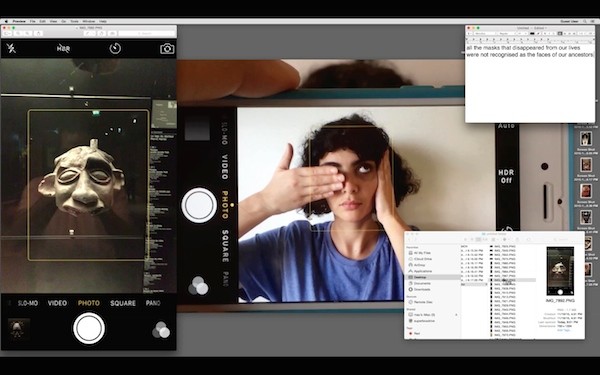Hiding Our Faces Like a Dancing Wind, 2016
In the work ‘Hiding our Faces like the Dancing Wind’ (2016), Yazan Khalili links concepts of surveillance and typecasting with the colonial origins of the
museum. The work’s engagement with digital culture – both the sinister elements of surveillance and facial recognition software and the artistic possibilities of using it – are extremely relevant to contemporary life and artistic practice.
Khalili presents a video that is a screen, seen through a number of other screens. This interplay expose structures, operations and algorithms that become the image itself. Speaking about his work Khalili talks about how in today’s world we see images through the screen to the extent that each image takes on a life of its own – it can be shared, edited, stored etc – all within a screen. As a result of this he has started to question the way in which images are produced, viewed and distributed.
The video also questions the use of technology and its tendency to typecast. In the video he features a woman’s face captured by a camera screen, which appears to confuse the facial recognition system so that a sequence of ethnographic masks interrupts the frame. This work recalls colonial mechanisms of racial classifications and the construction of historical narratives. The photographs of masks were shot at two colonial museums – the Tropenmuseum, Amsterdam and the Musée de l’Histoire de L’Immigration, Paris.
| Medium | Video |
| Duration | Duration: 7 minutes 30 seconds min |
| Credit Line | IMMA Collection: Purchase, 2023 |
| Edition | 2 |
| Item Number | IMMA.4441 |
| On view | Art as Agency, IMMA Collection: 2025-2028, 08/02/2025 - 07/01/2027 |
| Copyright |
Image © the artist For copyright information, please contact the IMMA Collections team: [email protected]. |
| Tags |
